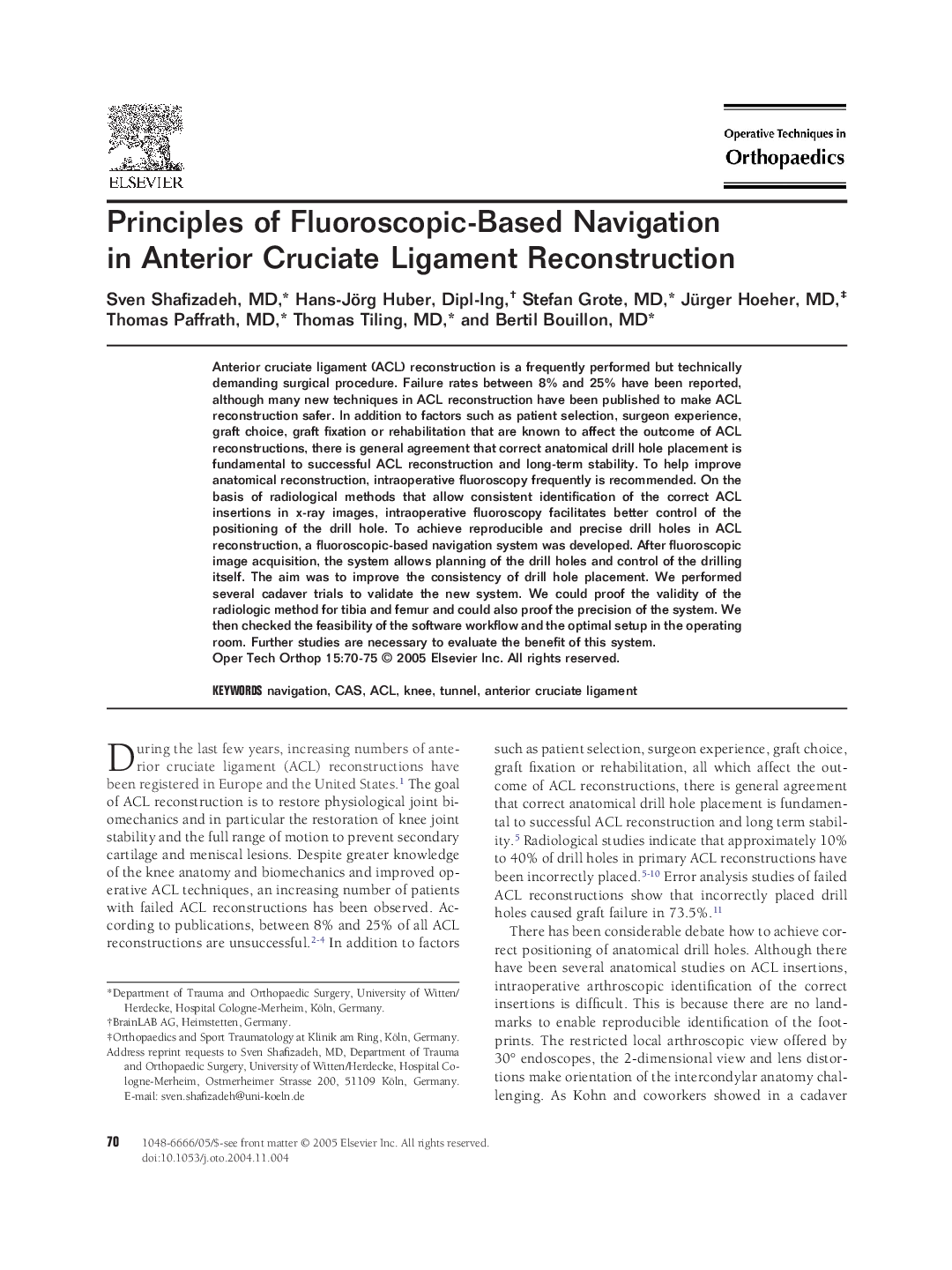| Article ID | Journal | Published Year | Pages | File Type |
|---|---|---|---|---|
| 9356723 | Operative Techniques in Orthopaedics | 2005 | 6 Pages |
Abstract
Anterior cruciate ligament (ACL) reconstruction is a frequently performed but technically demanding surgical procedure. Failure rates between 8% and 25% have been reported, although many new techniques in ACL reconstruction have been published to make ACL reconstruction safer. In addition to factors such as patient selection, surgeon experience, graft choice, graft fixation or rehabilitation that are known to affect the outcome of ACL reconstructions, there is general agreement that correct anatomical drill hole placement is fundamental to successful ACL reconstruction and long-term stability. To help improve anatomical reconstruction, intraoperative fluoroscopy frequently is recommended. On the basis of radiological methods that allow consistent identification of the correct ACL insertions in x-ray images, intraoperative fluoroscopy facilitates better control of the positioning of the drill hole. To achieve reproducible and precise drill holes in ACL reconstruction, a fluoroscopic-based navigation system was developed. After fluoroscopic image acquisition, the system allows planning of the drill holes and control of the drilling itself. The aim was to improve the consistency of drill hole placement. We performed several cadaver trials to validate the new system. We could proof the validity of the radiologic method for tibia and femur and could also proof the precision of the system. We then checked the feasibility of the software workflow and the optimal setup in the operating room. Further studies are necessary to evaluate the benefit of this system.
Related Topics
Health Sciences
Medicine and Dentistry
Orthopedics, Sports Medicine and Rehabilitation
Authors
Sven MD, Hans-Jörg Dipl-Ing, Stefan MD, Jürger MD, Thomas MD, Thomas MD, Bertil MD,
